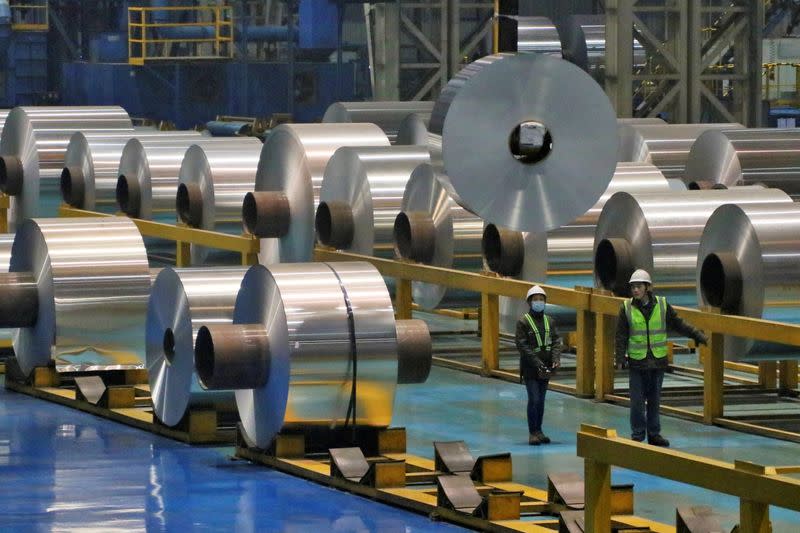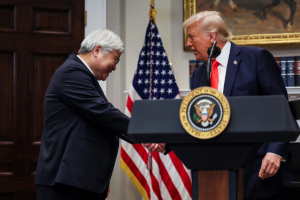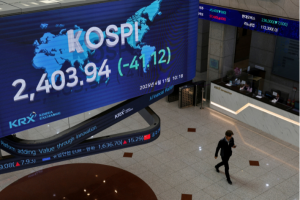Output from factories in China slowed for a third month in July, but the battered consumer sector rose slightly as stimulus targeting households had an impact.
Data released on Thursday was mixed and pointed to an uneven economic start to the second half. Policymakers would be concerned about dismal exports, as well as price and bank lending indicators earlier this month.
Data from the National Bureau of Statistics (NBS) showed industrial output grew 5.1% from a year earlier, slowing from the 5.3% pace in June. But retail sales rose 2.7% in July, up from a 2.0% increase in June.
ALSO SEE: SoftBank Ditches Planned AI Chips Tie-up With Intel – FT
Overall, analysts say the data steps up the urgency for policymakers to roll out more support measures aimed at consumers instead of pouring funds into infrastructure.
“Economic momentum appears to have stabilised somewhat last month, with a pick-up in consumer spending and servicing activity largely offsetting a slowdown in investment and industrial production,” Julian Evans-Pritchard, head of China economics at Capital Economics, said.
“With the government ramping up policy support, we think a modest recovery could take hold over the coming months.”
New focus on consumers
Chinese leaders last month signalled they would give greater consideration to a new economic playbook and focus stimulus at consumers rather than infrastructure and manufacturing.
The state planner last month said about 150 billion yuan ($20.97 billion) raised through special debt issuance this year would subsidise a consumer goods trade-in programme.
“Consumer demand continued to recover, as policies to expand domestic demand and promote consumption gained traction,” Liu Aihua, an NBS spokesperson, said.
Weighing heavily on consumer spending has been a bruising slump in the property sector over the past three years.
With 70% of Chinese household wealth held in real estate, a sector that at its peak accounted for a quarter of the economy, consumers have kept their wallets shut tight.
There were few signs of prospects improving with separate data on Thursday showing China’s new home prices fell at the fastest pace in nine years in July, as supportive policies failed to restore confidence in the struggling sector.
Depressed demand for commodities, oil
Further signs of depressed demand were evident in the Asian giant’s commodities usage with China’s oil refinery output for the month down 6.1% from a year earlier and crude steel output falling for a second month.
Fixed asset investment expanded 3.6% in the first seven months of 2024 year-on-year, but also missed expectations for a 3.9% rise and slowed from the 3.9% growth in the January to June period.
Analysts have broadly welcomed support targeting consumer spending but warn other policy levers will need to be pulled to put the economy on an even keel.
Calls for more growth boosting measures have dogged officials ever since a widely expected post-pandemic recovery failed to materialise in 2022.
While the government is still targeting growth of around 5% this year, analysts are concerned the world’s production powerhouse has entered a prolonged economic malaise similar to Japan’s in the 1990s. That suggests bolder reforms may be needed to revive growth.
On Thursday, the central bank injected cash through a short-term bond instrument and said it would conduct an rollover of its medium-term lending facility (MLF) later this month as it extends liquidity support to the financial system.
China’s central bank at a meeting earlier this month said it would step up financial support to the broader economy and efforts would be directed more at consumers to spur consumption.
But with domestic demand so weak and the outlook unclear, households and businesses are in no rush to borrow, suggesting other changes may be needed.
“The data shows that the economy has gotten off to a weak start in the second half of the year, and it is expected that the probability of replacing MLF with a RRR cut will increase, but key to maintaining 5% economic growth remains the arrival of fiscal spending,” ANZ China market economist Xing Zhaopeng said, referring to the central bank’s reserve requirement ratio.
- Reuters with additional editing by Jim Pollard
ALSO SEE:
China Bank Loans at 15-Year Low, as Factory Activity, Exports Dip
China Central Bank Vows $14bn to Rebuild Flooded Farm Areas
Sales of EVs up 21% Worldwide in July, as China Growth Rises
China to Extend Loan Programme For Companies to Cut Emissions
China Evergrande EV Units Ordered to Enter Bankruptcy
China’s New Home Prices Fall at Fastest Pace Since 2015
Weak Factory, Property Data Highlights China’s Uneven Recovery
























